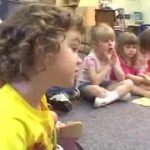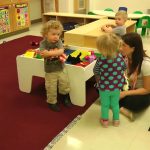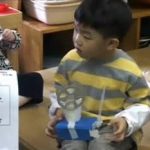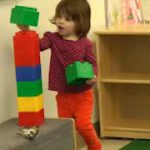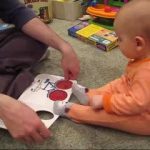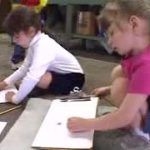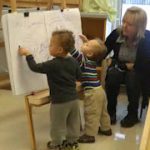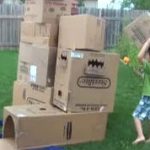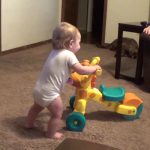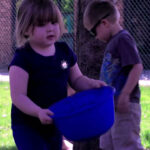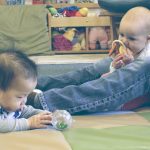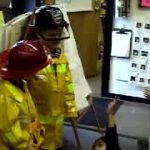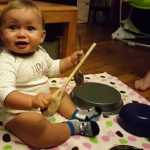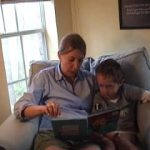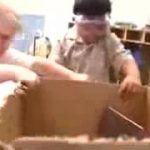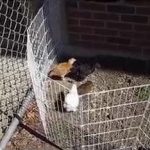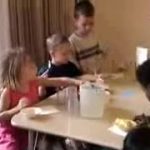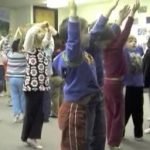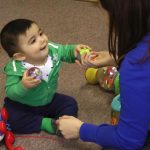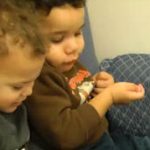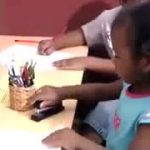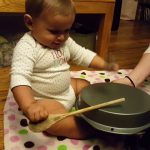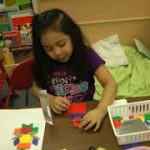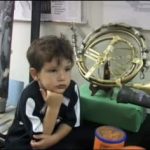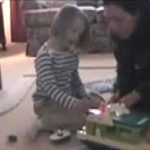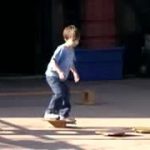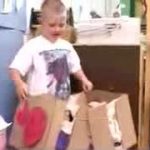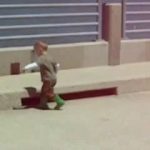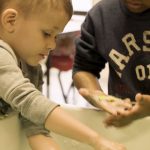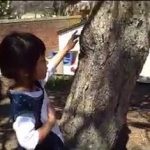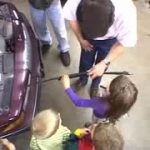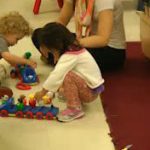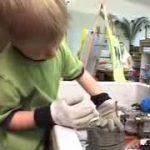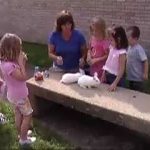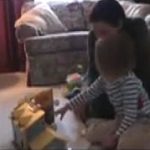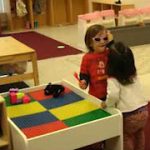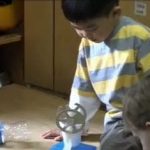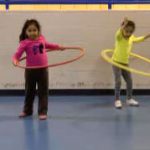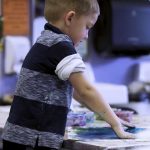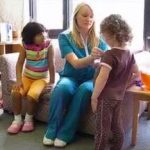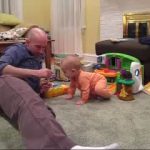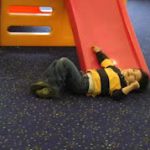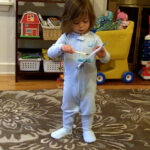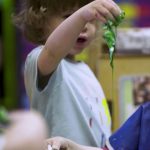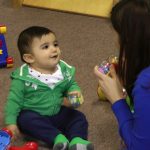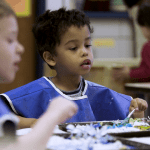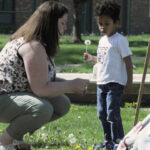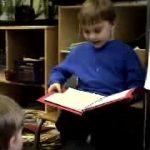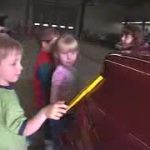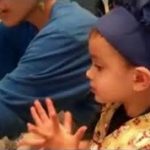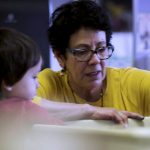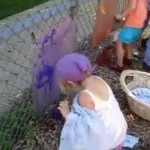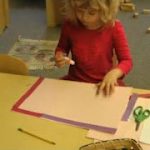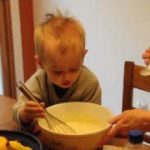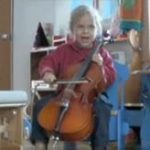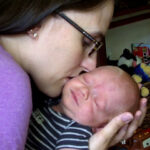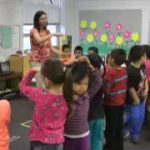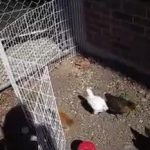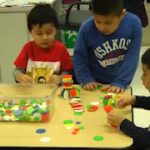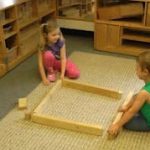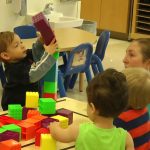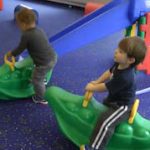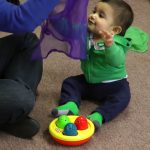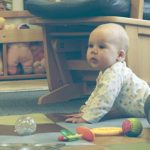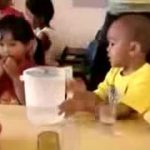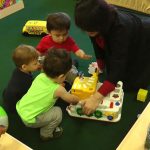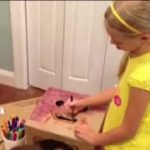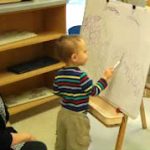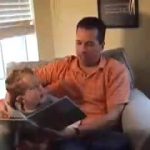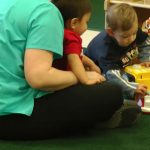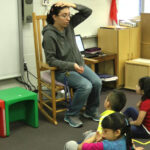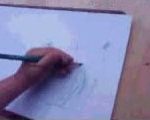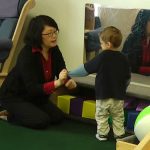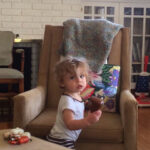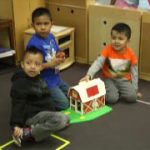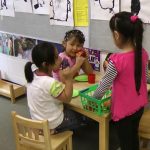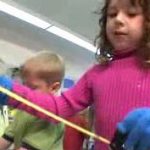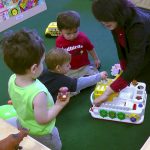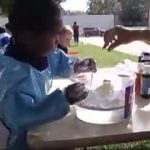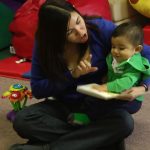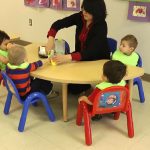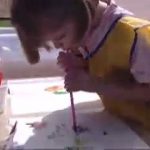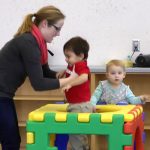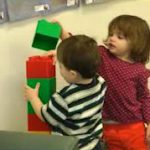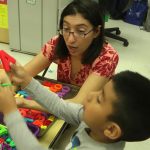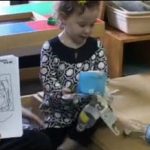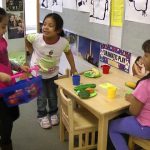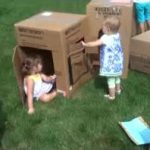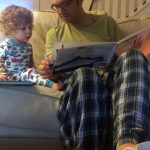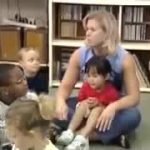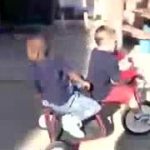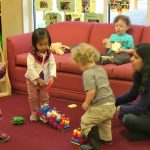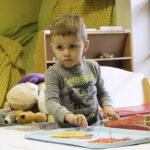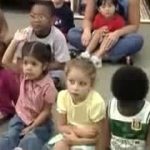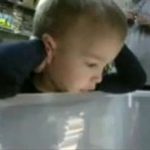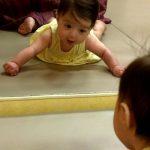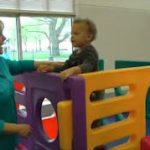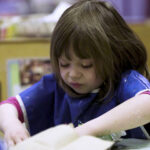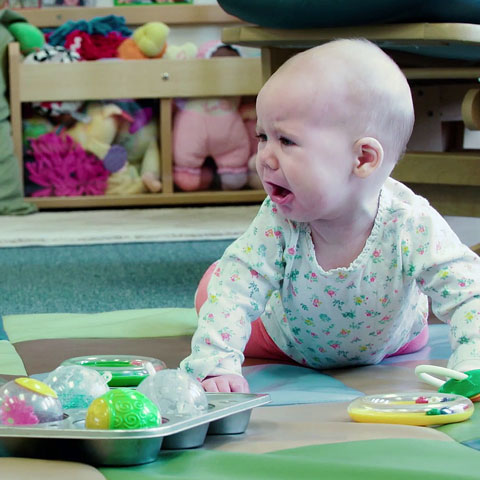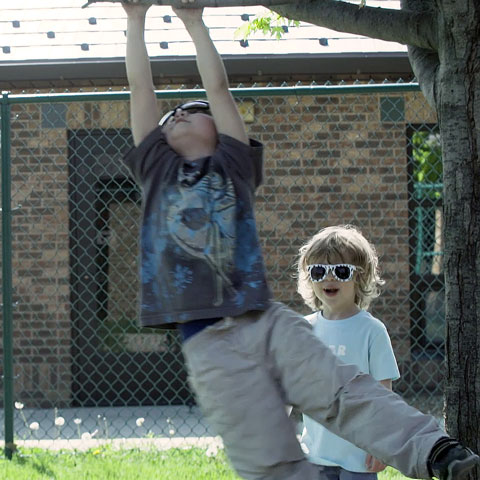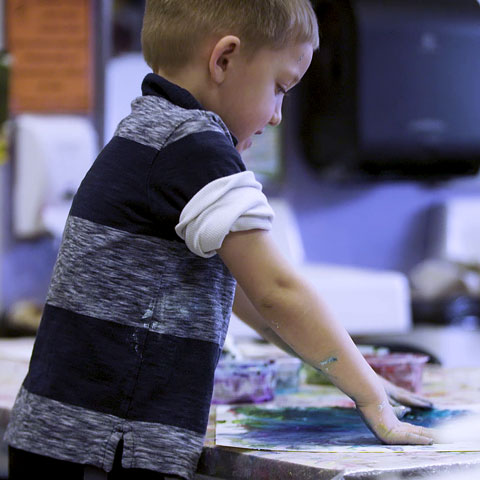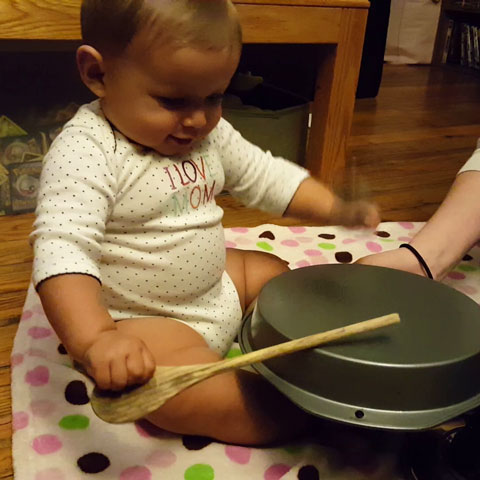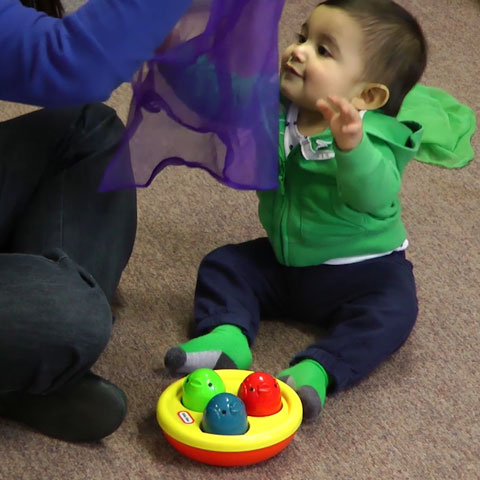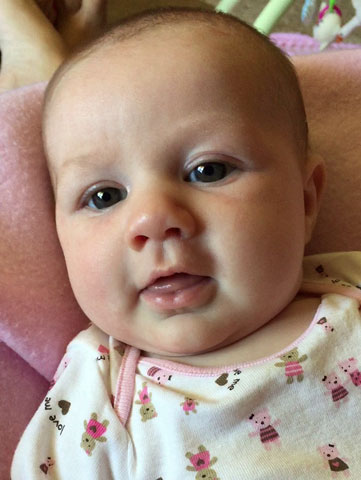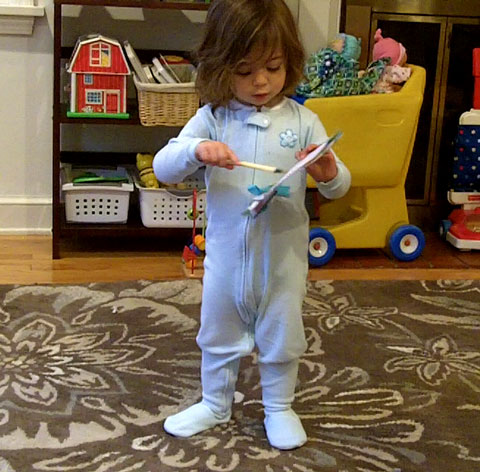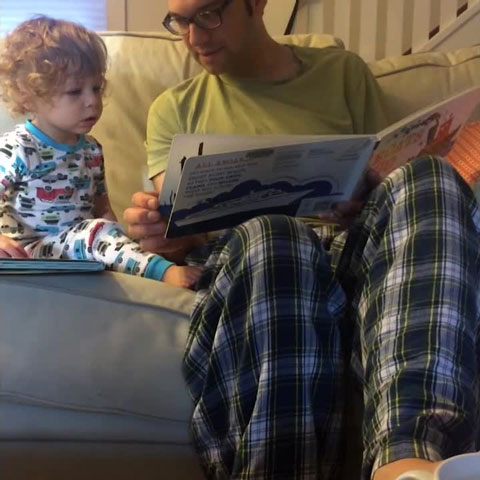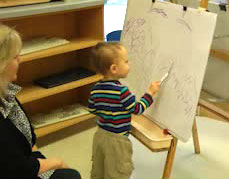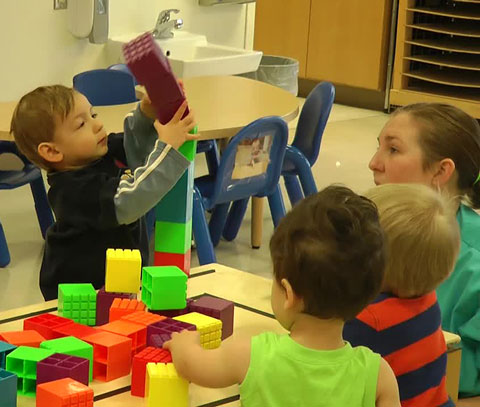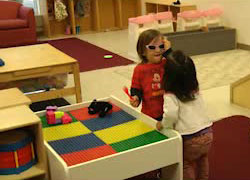Category: Videos
-
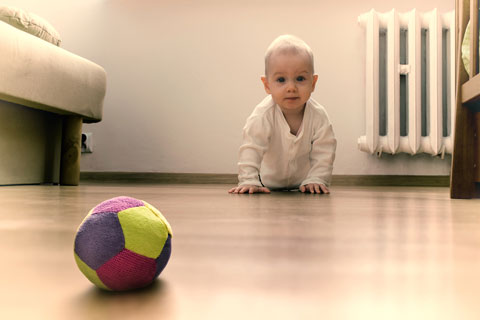
Curiosity and Initiative
This section describes how infants and toddlers use all their senses to learn about their world.
-

Problem Solving
This section describes how infants and toddlers learn to solve problems and consider the results of their actions.
-

Persistence, Effort, & Attentiveness
This section describes how infants and toddlers use their early experiences to develop the ability to focus on and complete simple tasks.
-
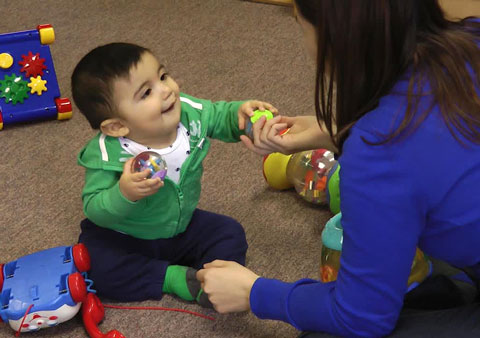
Creativity, Inventiveness, and Imagination
This section of the guidelines describes how infants and toddlers become more purposeful when engaging with their environment.
-
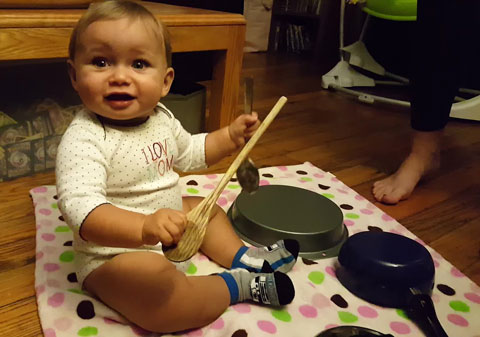
Confidence and Risk-Taking
This section of the guidelines describes how infants and toddlers develop confidence in exploring new experiences and taking developmentally appropriate risks.
-
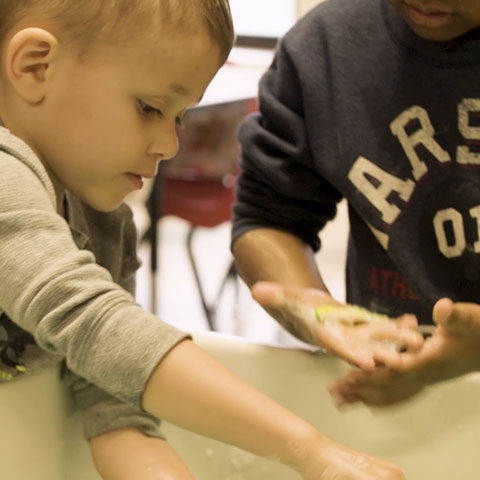
Exploring the Sensory Table
In this video, we watch Cameron and Anthony, both age 4.5 years, as they play at the sensory table in their classroom. Children enjoy exploring materials with their senses. A sensory bin or table is a place teachers can set up opportunities for children to do this type of exploration in the classroom while containing…
-
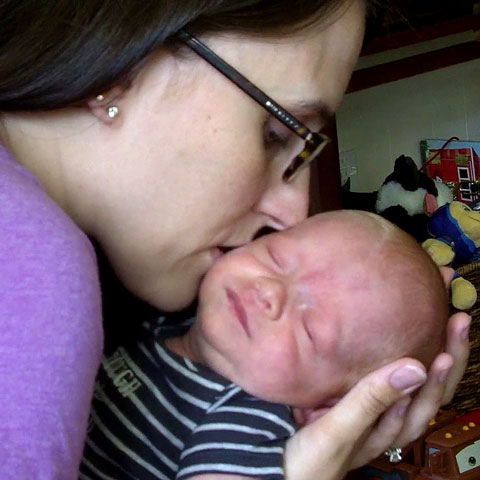
The Newborn Period
This Early Learning Moment provides an overview of the Newborn Period as explained in Illinois Early Learning Guidelines for Children Birth to Age 3.
-
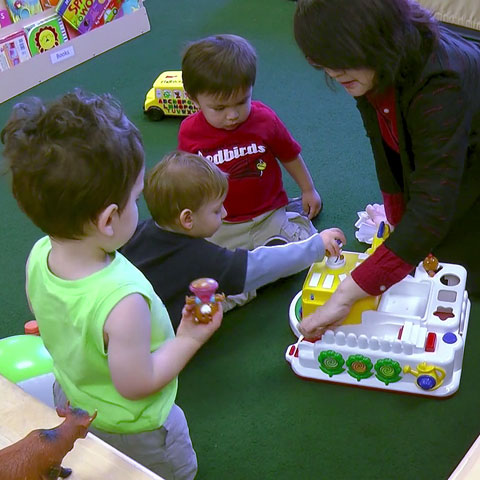
Self-Regulation: Foundation of Development
This Early Learning Moment provides an over view of the Self-Regulation: Foundation of Development section in the Illinois Early Learning Guidelines for Children Birth to Age 3.
-
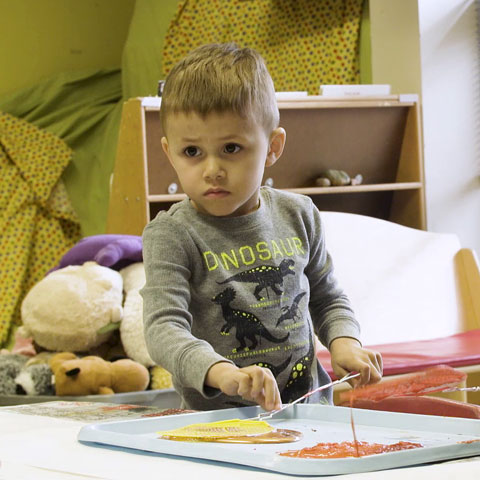
Waiting to Paint
When teachers set out activities that are of high interest to children, conflicts can arise. Being prepared with strategies to help children cope with the challenge of waiting for a turn can minimize conflicts.
-
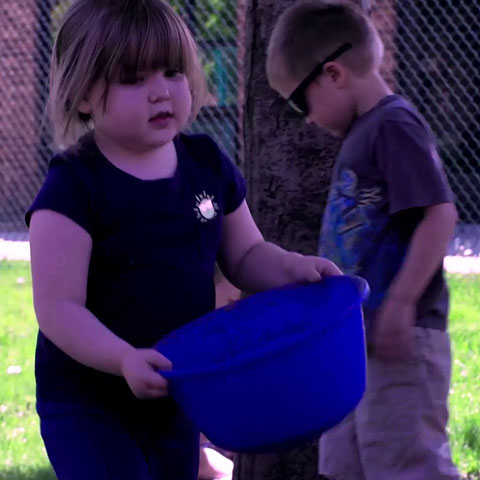
The Blue Bowl
In this video, we see a large blue mixing bowl spark children’s interest and lead to this type of complex play. The children work together in a group to reach a common goal of making “soup” in a bowl. They explore the outdoors and find several materials to put in the blue bowl for their…
-
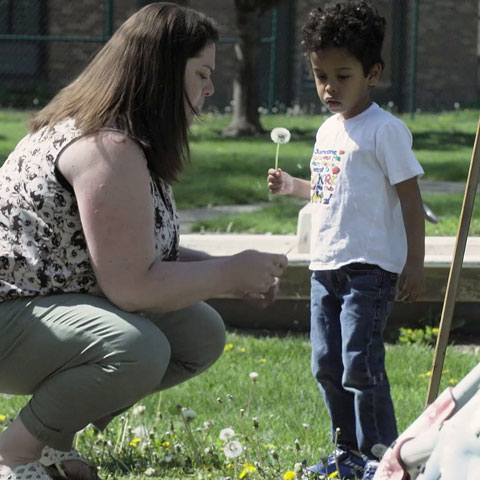
Lots of Dandelions
Nature play presents opportunities for teachers to introduce scientific concepts. In this video, we see a teacher join Fawn and Edwin, both age 4, as they blow the seeds from dandelions growing on the playground.
-
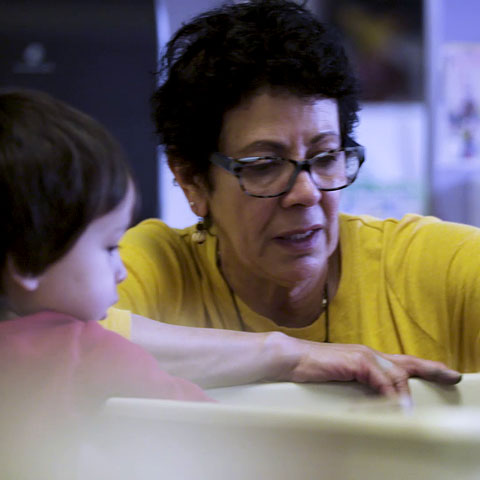
Maybe We Can Make a Road!
In this video, two children are playing at a sensory table filled with gravel, miniature road signs, and toy cars. The teacher introduces two unique words, terrain and yield, to the children as she plays side by side with them.
-
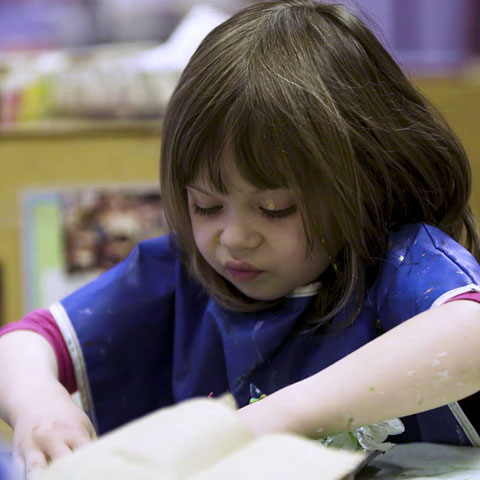
You’ve Got Blue Hands
Visual arts provide opportunities for children to use their fine motor skills to express their creativity. Children are active investigators as they explore color mixing and texture. Visual arts activities spark conversations where children can appreciate the expressions of others.
-
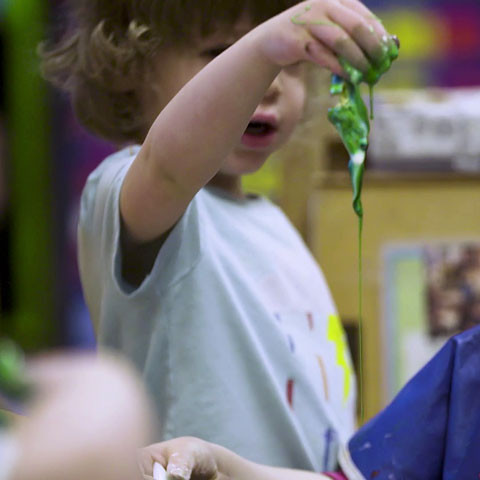
Look at It Go!
Messy play is a rich opportunity for conversation with peers and teachers. Exploring open-ended materials invites children to observe, make predictions, and use complex vocabulary to describe their experiences.
-
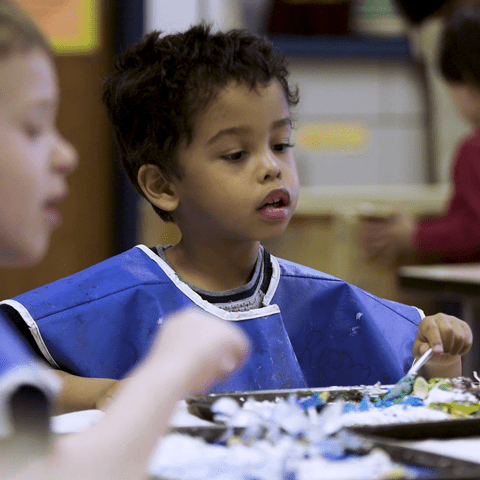
Looks Swampy
In this video, we watch several students conduct an experiment with glue, food coloring, and water. The teacher encourages the children to actively explore the materials, think about what is happening, and describe the experience.
-
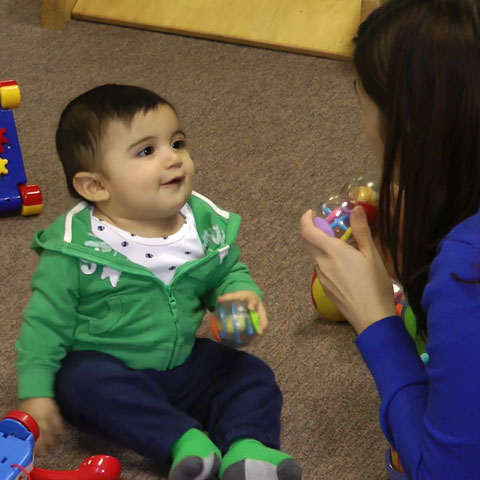
Look What This Can Do!
In this video, we see Mario and his mother, Norma, as they play in a playroom at a local community center. Norma shows Mario different ways to use the toys. When Mario bangs the toys together, Norma encourages his inventiveness by commenting on the creative ways Mario uses the toys to make noise.
-

Solving the Shoe Puzzle
As infants become mobile, they can explore and discover their world first hand. In this video, we see 12-month-old Aaron as he tries to put on a pair of his sister’s shoes.
-
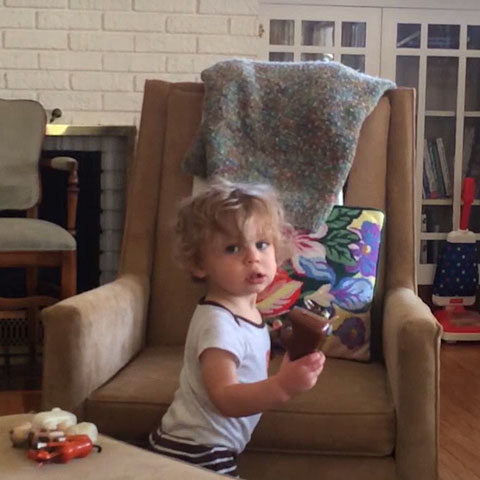
Rounding Up the Cows
Young children develop skills across domains as they grow. Sometimes, a new skill in one area allows them to make gains in another area. In this video, we see Aaron as he stumbles from the bench to the ottoman to transfer his toys from one area to another.
-
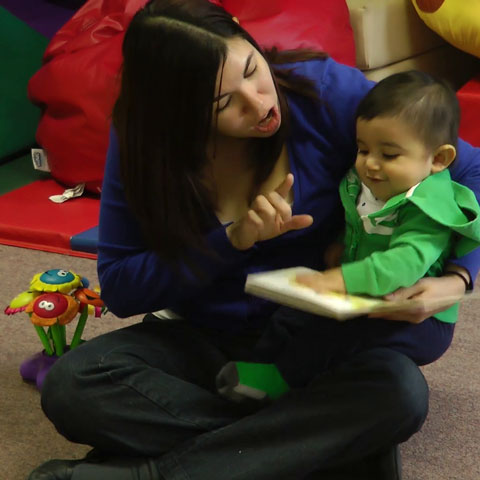
Sing Pío, Pío, Pío
A strong foundation for early literacy learning is created when caregivers and children read together, starting in infancy. Every time a caregiver reads, sings, and talks with a young child, they are building the child’s vocabulary and language skills.
-
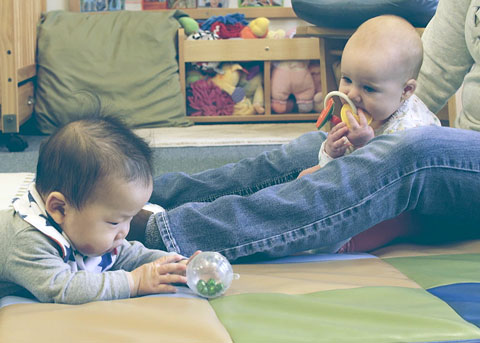
Cognitive Development
This section of the guidelines describes how infants and toddlers learn to think and reason. As they develop cognitive skills, they build understanding about the world around them. Their memory skills, spatial skills, and reasoning skills increase.
-
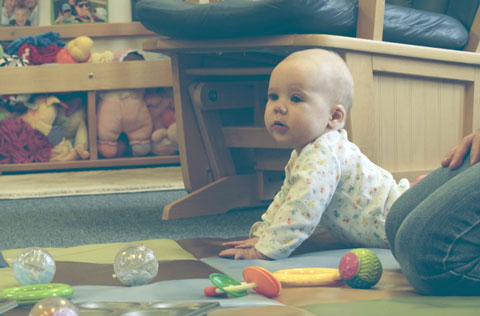
Physical Development and Health
This section of guidelines describes how infants and toddlers learn to move their bodies, take in their world through their senses, and carry out self-care routines. This section also explains how physical skills progress through development as young children’s bodies grow stronger and more able to move purposefully and with ease during everyday play and…
-
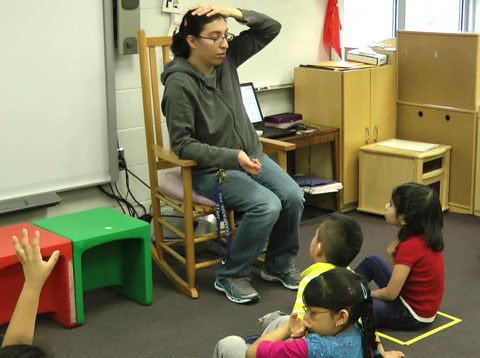
Retelling “Caps for Sale”
Children gain great comprehension and communication skills when they have the opportunity for rich discussion during read-aloud times. Stories read aloud also can provide opportunities for children to use their memory skills and retell stories with their peers and teachers.
-

Talking About Numbers and Letters
In this video, 4-year-old Martín plays with letters in a bilingual prekindergarten classroom, where teachers provide instruction in both Spanish and English.
-
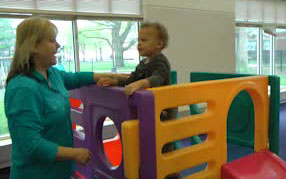
You Made It
This video takes place in the gross motor room of a university laboratory child care and preschool. This room is used for gross-motor activities by all classrooms in the center during inclement weather. Max (21 months) is trying to get up the climber, and the teacher helps him get to the top.
-
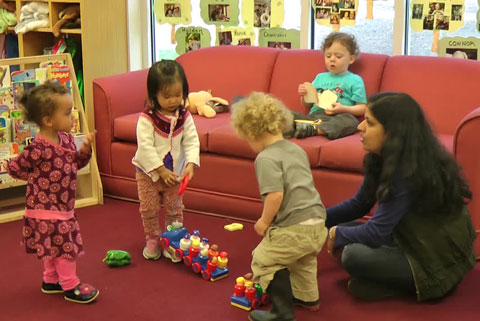
Two Trains
Sadie (26 months) pulls two trains across the carpet and sits down on the teacher’s lap. Sadie and the teacher are talking about the two trains while Daniel watches. Daniel reaches down to take the handle of one of the trains, to which Sadie objects. The teacher then asks Sadie to give one of her…
-

A Tower Together
The teachers provided balance in both supporting Anna and allowing her space to work through situations independently. She followed Anna’s reactions and did not intervene too early.
-
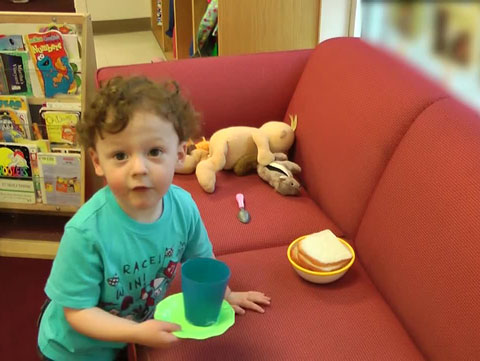
Tea Party
Through a progression of short clips taken over a span of 30 minutes, this video focuses on Hudson (at 30 months, the oldest in the class) gathering items, stuffed animals, and dolls; arranging them on a couch; and (briefly) enjoying his tea party with his stuffed animals.
-

The Step
The teacher provides Alicia with support to move the bolster and supervises her so she can safely use it as a step.
-
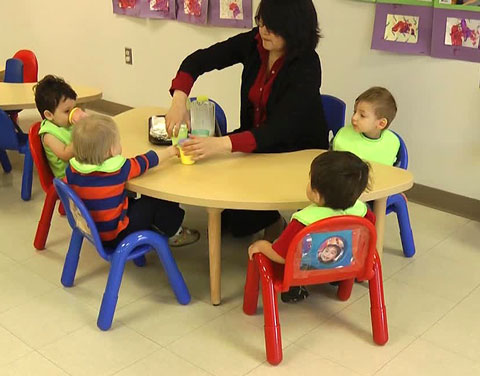
Snack Time
This interaction demonstrates the teachers’ cooperation and understanding of their roles in classroom management. It also demonstrates appropriate teacher-child interactions at the snack table.
-
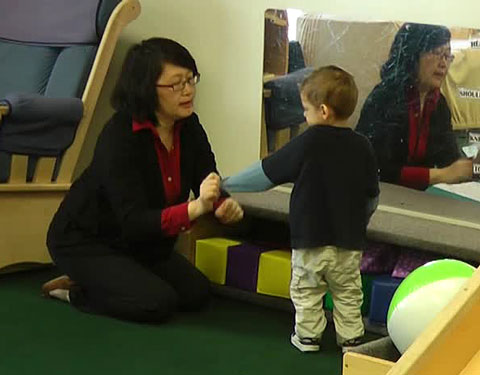
Roll Them Up
This interaction shows the teacher trying to decipher what Jayden is trying to do and what he wants.
-

Ready? Boing!
This interaction shows how the teacher appropriately engages the children by asking Spencer to participate and redirecting Mason when he takes the bear.
-
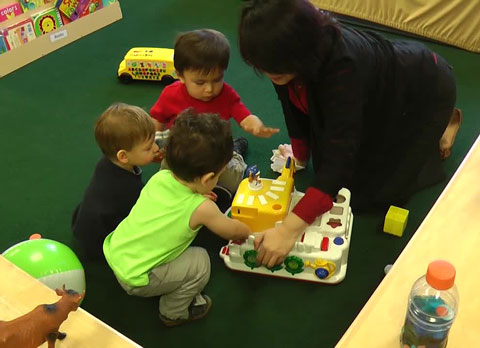
Press Here
Jayden (20 months), Mason (21 months), Spencer (20 months), and the teacher, Sui Ping, are sitting on the floor engaged with an activity box. Sui Ping is demonstrating for Mason how to make the small bear “jump” off the toy by pushing a button. The other two boys are also trying to play with the…
-
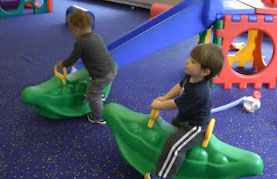
Pea Pod Rockers
Max (21 months) and Kenyon (27 months) are near the pea pod rockers, attempting to climb onto them. The teacher steps in to assist Max in climbing onto the rocker. She offers guidance to him and is close to him as he tries to climb onto the rocker.
-
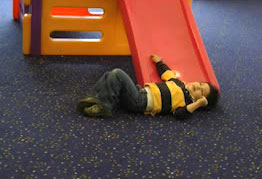
Let’s Get Up
Micah (30 months) is lying on the ground next to the slide. The teacher leans down and teasingly touches both of his hands before lifting him up to his feet. Micah walks over to the corner, picks up a ball, and throws it off-camera to the teacher, who tosses it back. Micah had shown very…
-

The Duck
This clip demonstrates a young toddler’s ability to connect a picture on a toy with a word and a sign she had been taught.
-
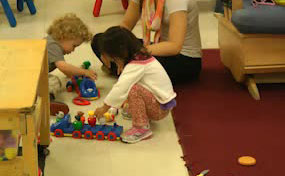
Filling the Trains
This video takes place in a toddler room of a university laboratory child care and preschool. Daniel (25 months) and Sadie (26 months) are playing with trains and putting people back into their trains. The teacher is nearby talking with them, narrates their activities, and helps Sadie to see that she needs to put the…
-
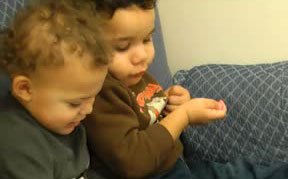
Down There
The video takes place in a toddler room of a university laboratory child care and preschool. Max (19 months) and Levi (27 months) are in the glider chair looking at a nursery rhyme book together. They are engaged in the books for a short while and then begin to rock the chair together. The nearby…
